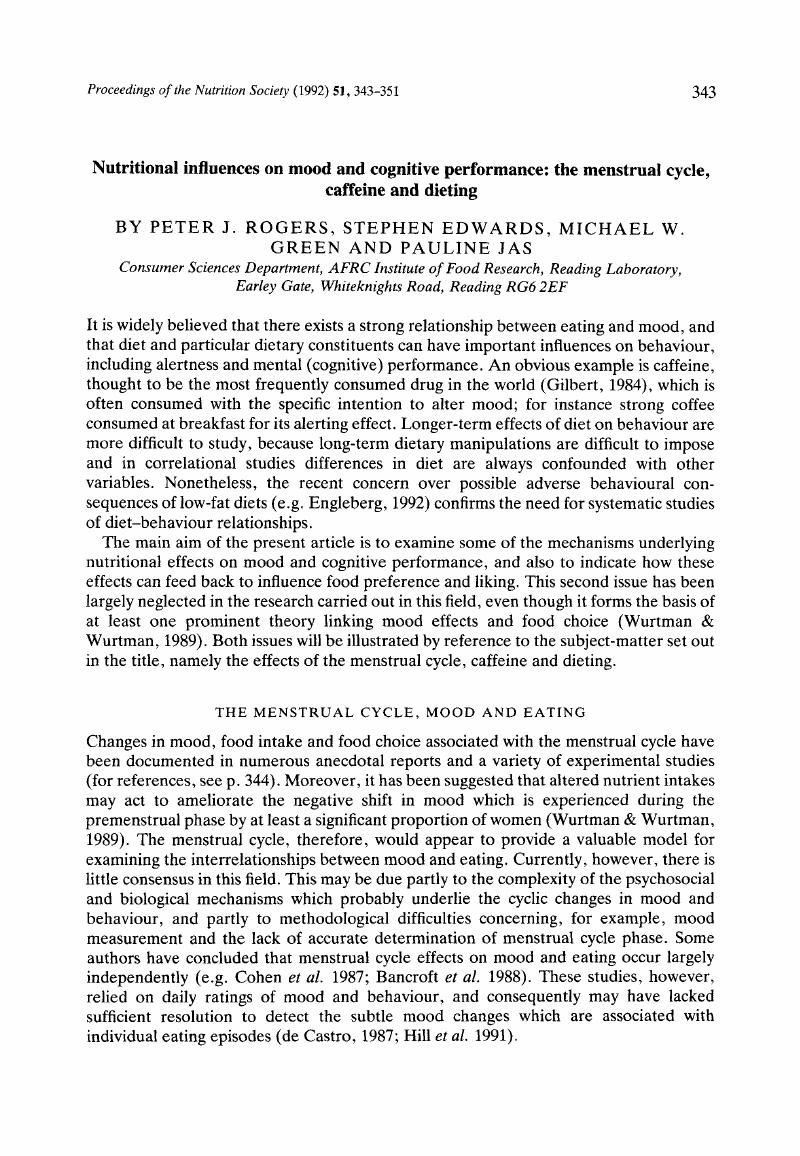Crossref Citations
This article has been cited by the following publications. This list is generated based on data provided by Crossref.
Hill, Andrew J.
1993.
Causes and consequences of dieting and anorexia.
Proceedings of the Nutrition Society,
Vol. 52,
Issue. 1,
p.
211.
Hill, Andrew J.
1993.
Pre-Adolescent Dieting: Implications for Eating Disorders.
International Review of Psychiatry,
Vol. 5,
Issue. 1,
p.
87.
Rogers, Peter J.
and
Lloyd, Helen M.
1994.
Nutrition and mental performance.
Proceedings of the Nutrition Society,
Vol. 53,
Issue. 2,
p.
443.
Rogers, P. J.
1995.
Food, Mood and Appetite.
Nutrition Research Reviews,
Vol. 8,
Issue. 1,
p.
243.
Blissett, Jackie
Lysons, Tony
and
Norman, Paul
1996.
Dieting behaviour and views of young children in Wales.
Health Education Journal,
Vol. 55,
Issue. 1,
p.
101.
Rogers, Peter J.
1996.
Food Choice, Acceptance and Consumption.
p.
319.
KEENE, JANET M
and
HOPE, TONY
1997.
Hyperphagia in Dementia: 2. Food Choices and their Macronutrient Contents in Hyperphagia, Dementia and Ageing.
Appetite,
Vol. 28,
Issue. 2,
p.
167.
Appleton, Katherine M
and
Rogers, Peter J
2004.
Food and mood.
Women's Health Medicine,
Vol. 1,
Issue. 1,
p.
4.
Reid, Marie
Bunting, Jane
and
Hammersley, Richard
2005.
Relationships between the Food Expectancy Questionnaire (FEQ) and the Food Frequency Questionnaire (FFQ).
Appetite,
Vol. 45,
Issue. 2,
p.
127.
BACKHOUSE, SUSAN H.
BISHOP, NICOLETTE C.
BIDDLE, STUART J.H.
and
WILLIAMS, CLYDE
2005.
Effect of Carbohydrate and Prolonged Exercise on Affect and Perceived Exertion.
Medicine & Science in Sports & Exercise,
Vol. 37,
Issue. 10,
p.
1768.
Backhouse, Susan H.
Biddle, Stuart J.H.
and
Williams, Clyde
2007.
The influence of water ingestion during prolonged exercise on affect.
Appetite,
Vol. 48,
Issue. 2,
p.
193.
Farage, Miranda A.
Osborn, Thomas W.
and
MacLean, Allan B.
2008.
Cognitive, sensory, and emotional changes associated with the menstrual cycle: a review.
Archives of Gynecology and Obstetrics,
Vol. 278,
Issue. 4,
p.
299.
Wu, Shih-Hao
Chen, Yu-Chun
Chen, Che-Hsiu
Liu, Hou-Shao
Liu, Zhi-Xin
and
Chiu, Chih-Hui
2024.
Caffeine supplementation improves the cognitive abilities and shooting performance of elite e-sports players: a crossover trial.
Scientific Reports,
Vol. 14,
Issue. 1,





